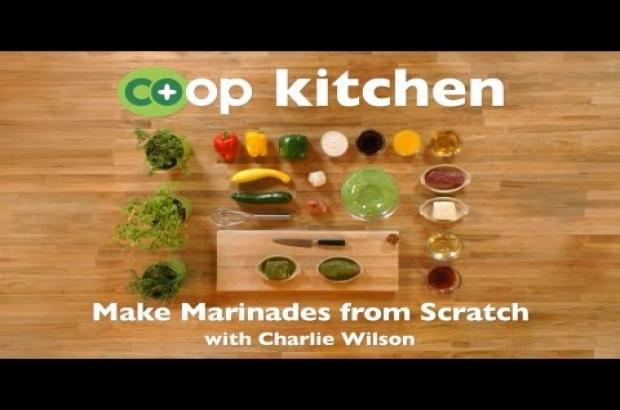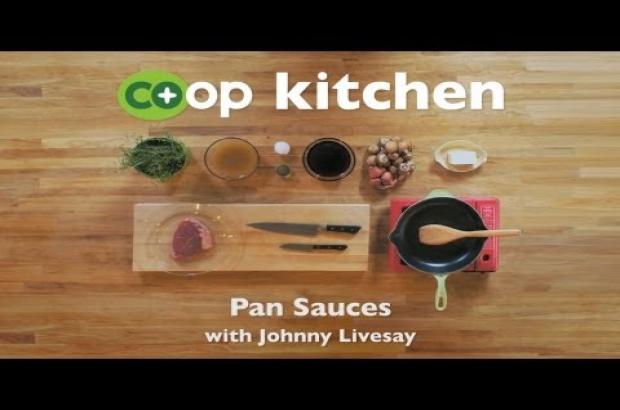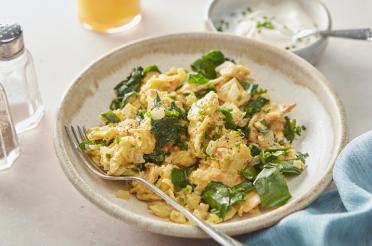Make Sauces from Scratch
In classic French cooking, the five mother sauces are the basic recipes from which nearly all other sauces are derived. By mastering béchamel, velouté, españole, tomato sauce and hollandaise, you'll have all the sauces of France at your disposal. Casey Wilcox introduces these five sauces, and demonstrates how to make a creamy Dijon mustard sauce with capers.
Find more Co+op Kitchen videos featuring information and easy recipes for making delicious meals at home, as well as handy hints from chefs and food enthusiasts who love sharing their passion for great food.
Sponsored By
Proudly sponsored by Organic Valley.

Video Transcript
I'm Casey Wilcox. I'm the executive chef of Justine's, a French brasserie in Austin, Texas. And today we'll talk about mother sauces, which are the basis of a lot of French cooking.
The five mother sauces
So there are five mother sauces, three of which are made with roux. A roux is a mixture of butter and flour that's used to thicken lots of sauces. Let's go through all five.
The first one is béchamel. It's a roux with milk added.
The second is velouté, which is a roux with chicken stock.
And the third is sauce espagnole, which is roux with brown stock such as veal or beef, and it's finished with a little bit of tomato and parsley.
The last two aren't made with roux at all, and they are tomato sauce and hollandaise.
Tomato sauce is simply tomatoes simmered down with onions and garlic until it's a sauce-like consistency.
And hollandaise is an emulsification made with thickened egg yolks and clarified butter.
How to make velouté
So today I'll demonstrate making the velouté.
We'll use equal parts of butter and flour. We don't need the pan to be super hot, because we're just melting it. So once the butter is mostly melted, we'll add an equal amount of flour.
We cook the flour so that it has the ability to kind of thicken the sauce better. If it's a raw flour, it wants to clump and also kind of loses a little bit of its thickening power.
For this sauce, and for the béchamel sauce, we're going to make what's known as a blond roux, where the flour has just started to cook and take on a little bit of color.
For a sauce like the espagnole or like a gumbo, you'll make a dark roux, because as the flour browns, it gives off a nutty flavor that's characteristic of both of those things.
And once you have the light brown color, you'll take your stock. So add a little bit at a time so that we can work it all together well. We want to add the stock at the same temperature as the roux. It helps prevent splattering and also stops it from dropping very quickly in temperature.
Once we've incorporated some stock into the roux, we can go ahead and use the whisk to finish it up and leave us with no lumps as we add the last bit of the stock.
If you thicken the sauce with roux, it will continue to thicken as you boil it. If you thicken a sauce with cornstarch, which is another method, once it's boiled, it's done. It won't thicken anymore unless you're just reducing it.
We have what is a basic velouté. Pretty simple.
This is a mother sauce. Mother sauces are intended to be the base of something else. We can use it for sauce for chicken as you would today, but we're going to want to dress it up a little bit.
So today we're going to add some capers, some mustard and the juice of a lemon to brighten it up.
So, since the sauce is made with a chicken stock, today we'll use it on some chicken. And a bit of the sauce. Make sure you get some capers in there. And we can just garnish with a little bit of parsley.
So this is a classic velouté with a couple of variations, which is what we do with all the mother sauces.
And I'm Casey Wilcox for Co+op, stronger together.













